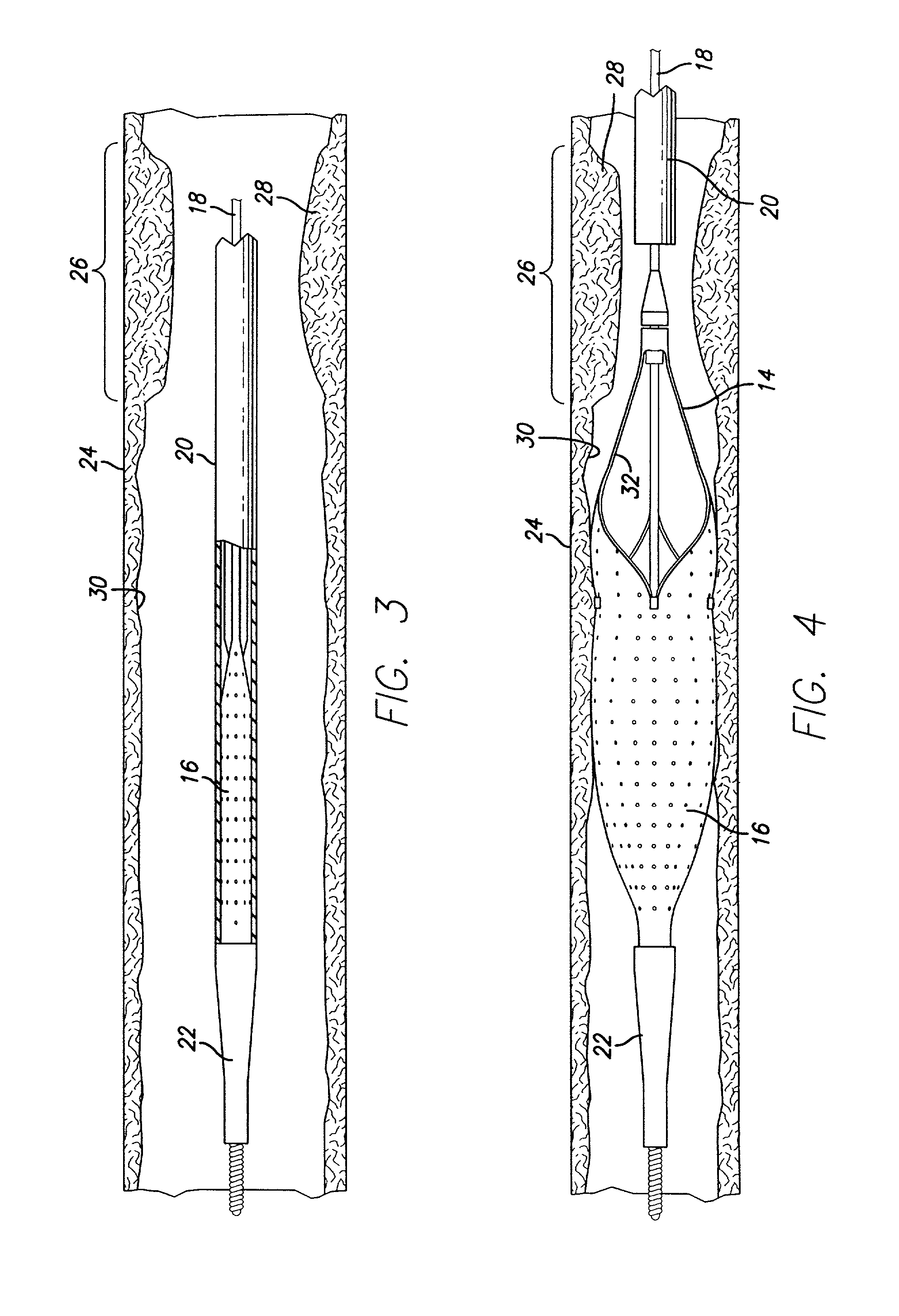Variable thickness embolic filtering devices and method of manufacturing the same
- Summary
- Abstract
- Description
- Claims
- Application Information
AI Technical Summary
Benefits of technology
Problems solved by technology
Method used
Image
Examples
Embodiment Construction
[0036]Turning now to the drawings, in which like reference numerals represent like or corresponding elements in the drawings, FIGS. 1 and 2 illustrate one particular embodiment of an embolic filtering device 10 incorporating features of the present invention. This embolic filtering device 10 is designed to capture embolic debris which may be created and released into a body vessel during an interventional procedure. The embolic filtering device 10 includes an expandable filter assembly 12 having a self-expanding strut assembly 14 and a filter element 16 attached thereto. In this particular embodiment, the expandable filter assembly 12 is rotatably mounted on the distal end of an elongated tubular shaft, such as a steerable guide wire 18. A restraining or delivery sheath 20 (FIG. 3) extends coaxially along the guide wire 18 in order to maintain the expandable filter assembly 12 in its collapsed position until it is ready to be deployed within the patient's vasculature. The expandable...
PUM
 Login to View More
Login to View More Abstract
Description
Claims
Application Information
 Login to View More
Login to View More - R&D
- Intellectual Property
- Life Sciences
- Materials
- Tech Scout
- Unparalleled Data Quality
- Higher Quality Content
- 60% Fewer Hallucinations
Browse by: Latest US Patents, China's latest patents, Technical Efficacy Thesaurus, Application Domain, Technology Topic, Popular Technical Reports.
© 2025 PatSnap. All rights reserved.Legal|Privacy policy|Modern Slavery Act Transparency Statement|Sitemap|About US| Contact US: help@patsnap.com



